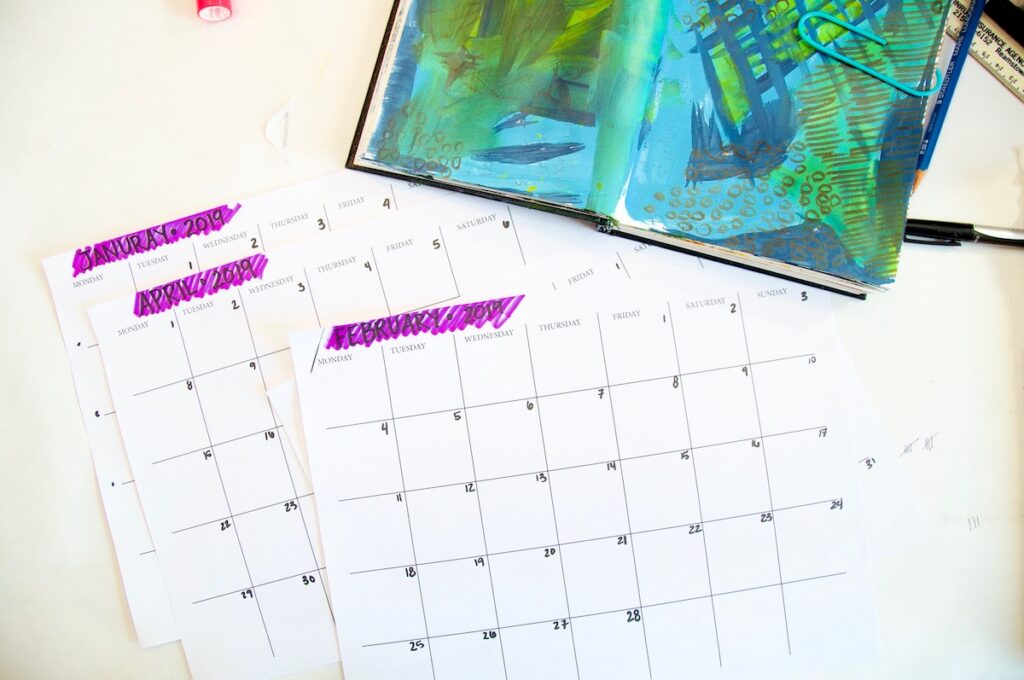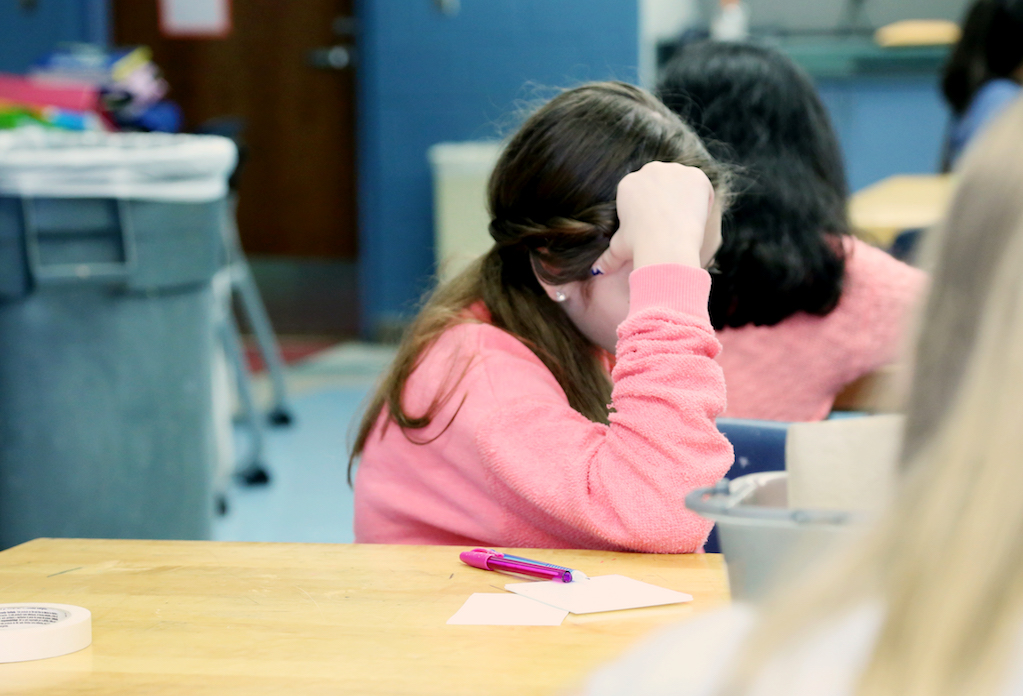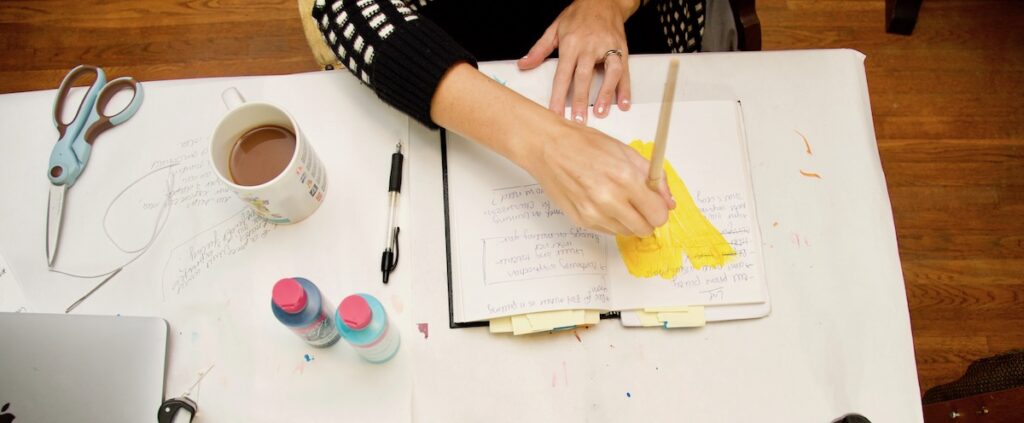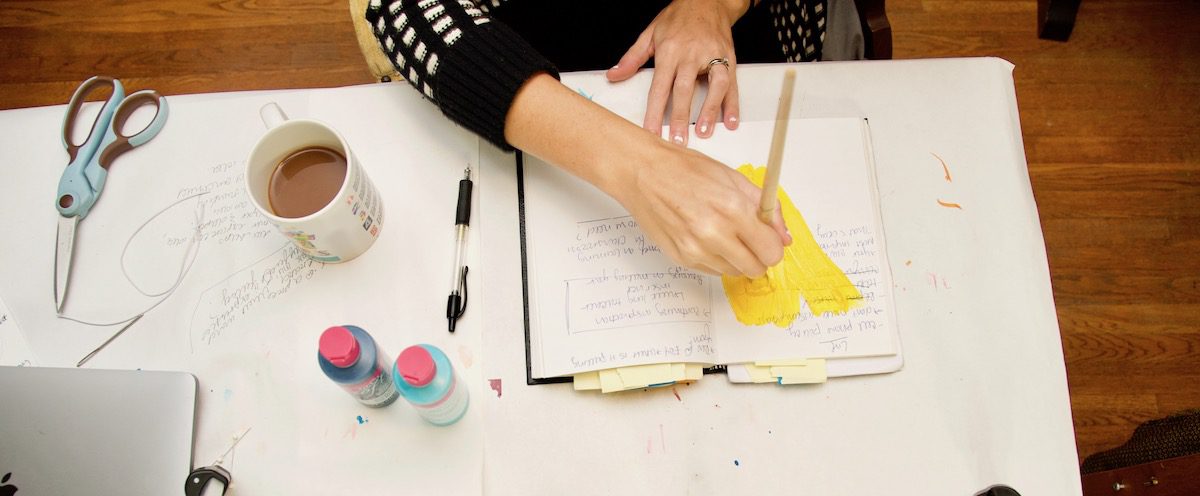We all can agree creative thought is essential and takes time. But, short class periods and schedules where you may not see your students for days at a time can make leaving time for creativity challenging.
Let’s explore how to write a lesson that fits into your tight schedule and also encourages and nurtures creative thought.

Author and social psychologist, Graham Wallas, breaks the creative process into four steps; preparation, incubation, illumination, and verification. Many authors in the fields of creativity and psychology have written about the creative process over the years. And while there are some differences, they boil down to the four main principles Wallas presents.
Let’s take a closer look each step, and how to keep each step in mind when writing a lesson plan.
Step One: Preparation
Preparation is when you first become aware there is a problem to solve or question to answer. You also realize you don’t know the answer at this exact moment. This situation is different than when you’re completing a math problem with only one right answer.
Step Two: Incubation
Incubation is the hardest to plan for because it’s what happens in our student’s minds while they’re doing something else. Incubation takes time; it’s something we’re unaware of for the most part. Our brains think about the problem at hand and begin to work to make connections and uncover what we know about the problem.
Step Three: Illumination
Illumination is everyone’s favorite part. It’s the moment when you suddenly have an idea, and you’re sure it’s a good one. Illumination cannot be forced or predicted, but it can be nurtured.
Step Four: Verification
Verification is the part we tend to focus on in our classrooms. It’s when students put their ideas into action; when the brush hits the canvas or when hands begin sculpting the clay. Verification is taking an idea and trying it out. It’s easy to see, measure, and access.
The first and last steps are easy to plan into a lesson and something you probably already do. It’s the two steps in the middle that are more difficult and often overlooked.
Yet, incubation and illumination will happen naturally if given the proper time and space. With intentional planning, your students will have the time to develop creative ideas instead of turning to copy from Pinterest.
While there is no magical amount of time needed for incubation to lead to illumination, it is more than the five to ten minutes we often give our students. For example, when asking students to brainstorm and draw fifteen thumbnail sketches, we’re already asking them to produce ideas.
Let’s look at how to plan time into your lessons to allow for incubation and illumination.

You can’t just present a project to your students and then allow them to sit there and daydream for 30 minutes. Or, can you?
You absolutely can plan a lesson that requires a full class period of daydreaming, but if that makes you uncomfortable, there are other ways!
One idea is to write your curriculum in a way that has students thinking about upcoming projects one to two weeks down the road.
My favorite way to do this is by using exit tickets. Traditionally, exit tickets are used to check for understanding. But why not flip that idea? Instead of having them reflect on the project they just did, have students respond to questions to get them thinking about future projects. Or, have them think about what they’re going to do next with their current project.
For example, if the next project is having students create a poster to address a problem or issue they see in the school, two weeks before, ask them to write down three problems they see within the school on an exit ticket. The following week you might ask them if they could change anything about the school, what would it be and how might they make the change?
If you want them to reflect on a current project, you could ask things like, ” What is one thing you don’t like about your current project? Why?” Or, “Complete the following sentence three times: I wonder what would happen if…”
You might be thinking, but won’t my students wonder why I’m asking these questions?
If they do ask, tell them it’s leading to a future assignment. Or, if you’re like me and ask lots of crazy questions, your students won’t even try to figure out what you’re doing.
Now, by the time you present the project or problem to them, it’s already been floating around in their heads for two weeks. You’ve created time and space for the creative process to take place.
As you work to write lessons embracing the creative process, it’s important to remember it is a cyclical process, not a straight line.

For example, critiques, as well as final grades and feedback, should restart the thinking process, sparking new questions and problems related to subject matter, mediums, and techniques.
In addition, you can encourage your students to start keeping track of their questions and ideas themselves by using a sketchbook. To get them used to the idea, consider having them take the first five minutes of each class to free write. Another powerful practice is to model writing down ideas and questions for your students.
Personally, I almost always have a sketchbook in my hands and am constantly jotting down notes or quick sketches. Students observe this behavior and become curious about what’s inside the book. They begin to realize the book is what allows me to have so many ideas. It also works as a way to demonstrate a sketchbook doesn’t have to be something beautiful, and in fact can be a total mess.
In short, creativity takes time.
It’s time for you to decide if it’s more important to finish all of the projects on your list or to give your students the power to be creative thinkers. Don’t be afraid to build extra time into your lessons to allow for incubation and illumination. You’ll be amazed by the results.
What is one adjustment you can make to your teaching practice in the next week to encourage creative thought?
What is your favorite way to find problems?
Magazine articles and podcasts are opinions of professional education contributors and do not necessarily represent the position of the Art of Education University (AOEU) or its academic offerings. Contributors use terms in the way they are most often talked about in the scope of their educational experiences.





